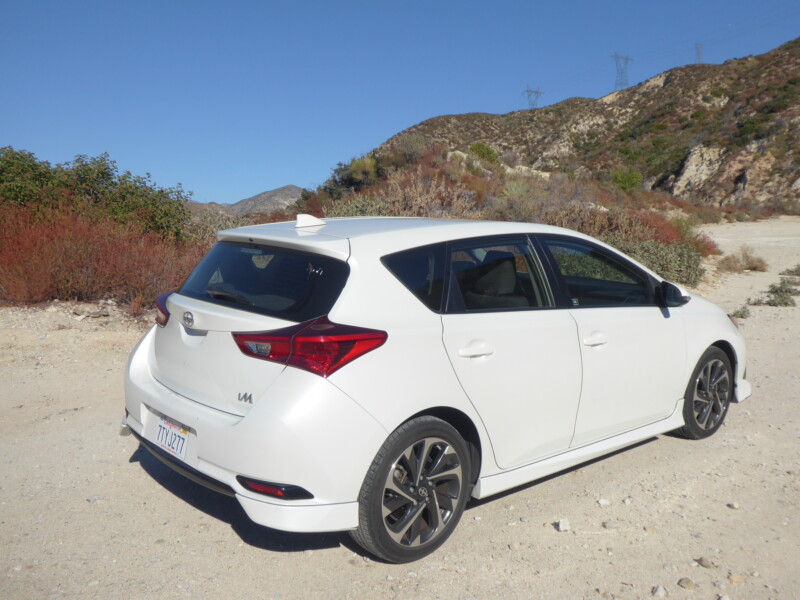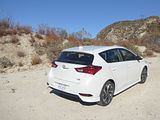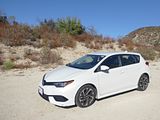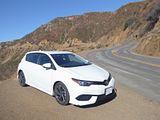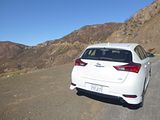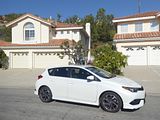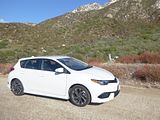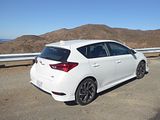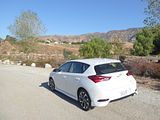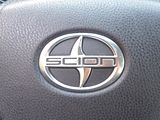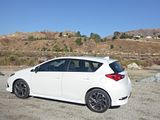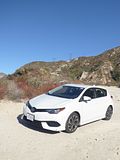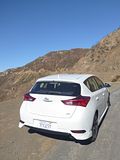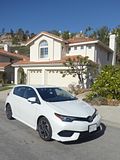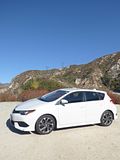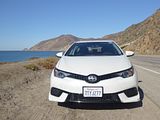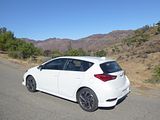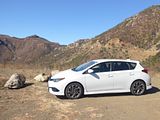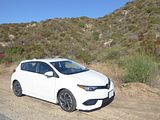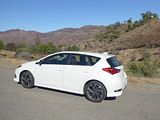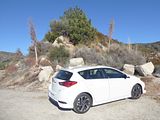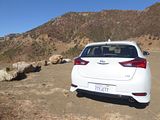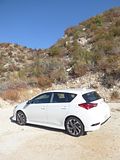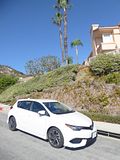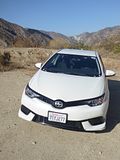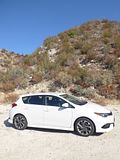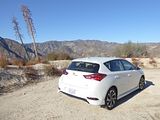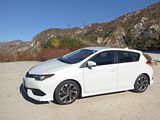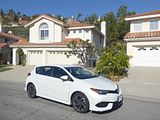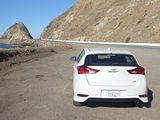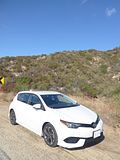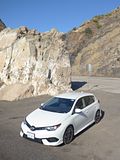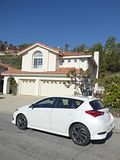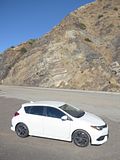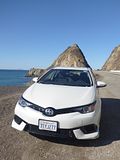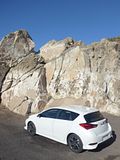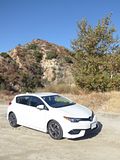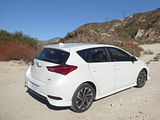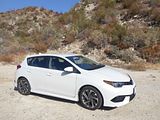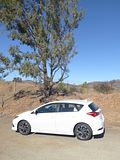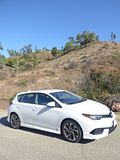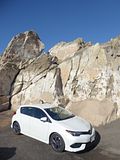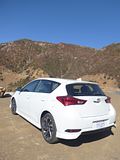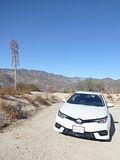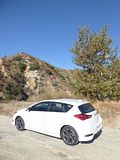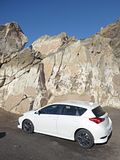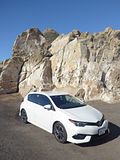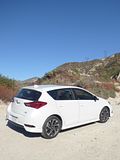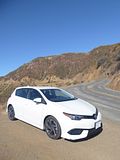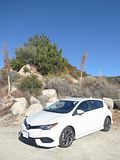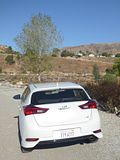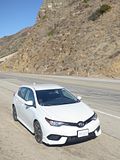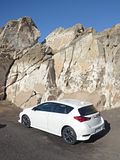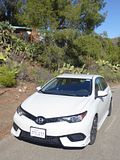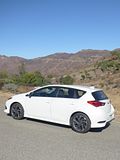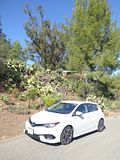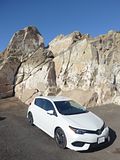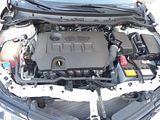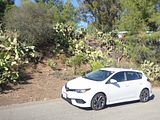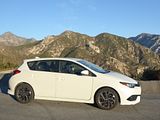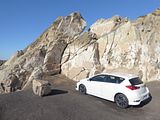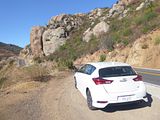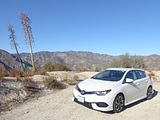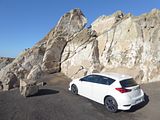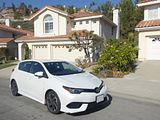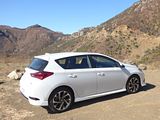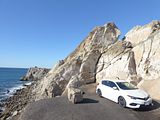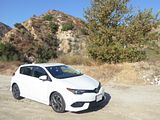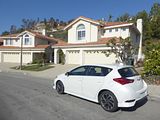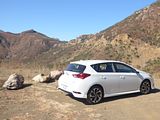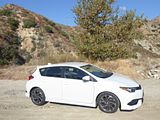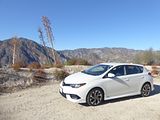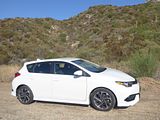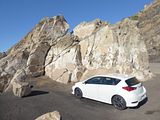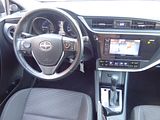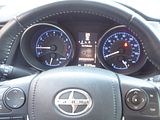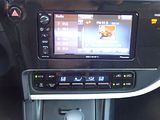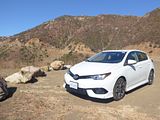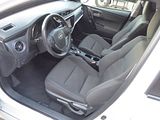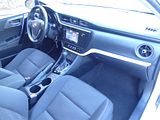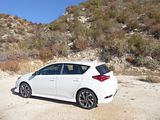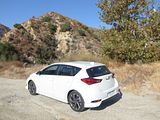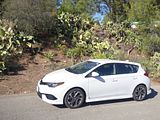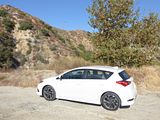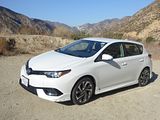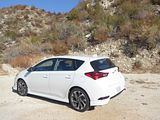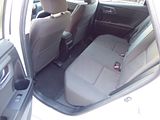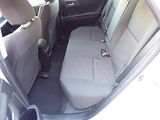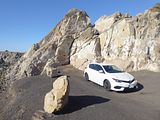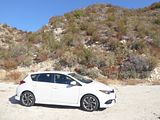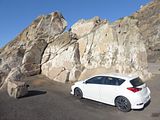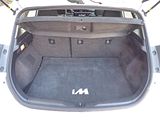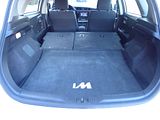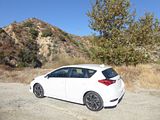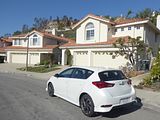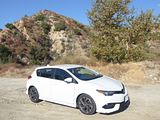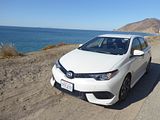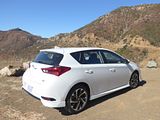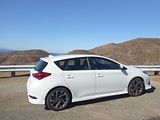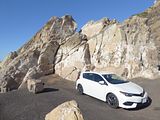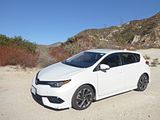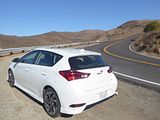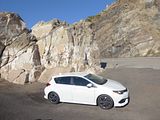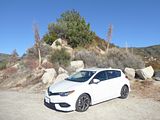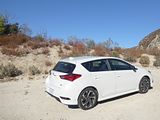I have been renting cars for a long time now, and over the years have amassed quite an understanding at least of the part of the business that the customer sees, namely the availability of cars and how best to get what you want to drive. Much of this has come from careful observation, augmented by information I have gleaned from talking with a number of the employees, as well as online sources such as a massive web forum which covers all manner of travel-related partners and programs. Even so, now and again, I am taken by surprise. And that happened when I went to go and collect what would be the final rental car of the November 2019 Los Angeles trip. There parked up among the lines of recent model was something rather older. Now occasionally, a Hertz employee does, for whatever reason, leave their own personal car in one of the spaces usually used for rental vehicles, and I initially assumed this was one such. But no, it turned out that this Scion iM was available for rental. And it was badged Scion, not the subsequent Toyota Corolla iM badged version that was offered when the decision was taken to shut down Scion for the 2017 model year. Closer inspection revealed that the car was from the 2016 model year, which indeed it would have to be as that was the only year that this car was offered. It had covered 32,000 miles, so I am guessing that it has stayed on fleet as it has yet to hit a mileage threshold, which is usually around 45 – 50,000 for the non-premium cars in Hertz’ world, a figure which most achieve at or some time before their second birthday. So, whilst the US fleet currently comprises a mix of 2018, 2019 and a few new 2020 model year cars, here was something much older. The second surprise is that this was a Scion, a brand which never seemed to appear at all in the Hertz fleet when it was alive, so quite who purchased it, and why was also a mystery, though the paperwork did suggest that the owning location was indeed the Hertz LAX operation. As this was a car that I had not driven, and was very unlikely to see again, I decided that this would be the rental car of choice, bizarre though that may seem.
Scion was created for the US market as a youth brand, initially being premiered with a couple of concept cars in 2002 before making a soft launch at selected Toyota dealers in California in 2003 and then going national in 2004. It was a clear attempt to appeal to a different sector of the market from that occupied, successfully, by Toyota with a simplified “pure price” sales concept that eschewed traditional trim levels and dealer haggling. Each vehicle was offered in a single trim with a non-negotiable base price, while a range of dealer-installed options was offered to buyers for personalizing their vehicles and there was a reliance on viral and online marketing. Initially, the concept seemed to work and sales were strong for the first few years, but they soon started to tail off and the hope that the cion buyer of today would be Toyota buyer of tomorrow did not materialise. For most of its existence, the Scion cars available to American buyers, all of which could be had in Japan with a Toyota badge, but not in Europe were either small boxy machines like the xA, xB and xD or a small coupe call the tc. An attempt to sell the innovative Toyota iQ did not really work as the car was seen my Americans as simply too small. Having shown a concept version of a new offering called iM at the 2014 Los Angeles Show, the production versions of two new Scion models were display at the 2015 New York Auto show, as additions to the range for the 2016 model year. The iA hatchback was essentially a Mazda 2 with a rather bulbous nose on it and there was also the subject of this test, the iM, which to all intents and purposes was the Toyota Auris/Corolla hatch that had been on sale in Europe since late 2012. In keeping with Scion’s desired image, the iM was positioned as a sporty car with a body kit and glitzy alloy wheels intended to make the car appeal to people who could never consider a Corolla. It also provided a hatchback offering that Toyota previously lacked in this market segment, though it has to be noted that other hatch models of this size do not generally sell in large numbers in America, so this was never likely to make massive sales. In the end, fewer than 6000 of the cars were sold with a Scion badge before the parent company decided to close the brand down. As a relatively new model, the iM and also the iA adopted a Toyota badge and few other changes for the 2017 model year. So this must count not just as a rare car in rental car terms, but actually a rare model in absolute terms. Question is: was it any good?
When this car was launched in the US, Scion positioned it very much as a sporty offering, which would seem a little odd to those of us in Europe who would say that the Toyota Corolla is about as unsporting as you get. Mechanically, the US spec car is pretty much as you would get in a European one, but there is a body kit added, which as we all know, makes a car “sporting”. The iM is powered by a 1.8 litre four cylinder engine generating 137 bhp, and in the case of the test car was coupled to a CVT gearbox, though this is a cost option with a six speed manual being in the standard spec. This Scion proved utterly unremarkable to drive. Whilst the car is quiet and generally refined at freeway speeds it is certainly not rapid and getting it underway can be quite a noisy affair, too. The iM can keep up with the flows of traffic but needs to be worked quite hard to do so, and the actual performance figures for the car show it was just about the slowest in its class. The gearbox proved quite well matched to the engine, though, with few of the problems that can accompany this type of transmission. The iM does redeem itself somewhat at the fuel pump, though. I had the car for 2 days and covered 320 miles, and it needed just 8.98 US gallons to fill it, which calculates to 35.63 mpg US or a very respectable 42.57 mpg Imperial.
If the performance does not come across as at all sporty then nor does the way that the iM drives. The steering is light, as is generally the case with all Toyota models, though there is a little bit of feel, so you just about have a couple of clues as to what the steered wheels are going to do. The handling is safe and secure but not what you could remotely call fun and whilst grip is good, there is quite a lot of body roll as you tackle the corners with even a modest bit of enthusiasm. Sporty this is not and it is not a patch on a Mazda 3 or Ford Focus, which are the standard setters in the class. The iM came on 225/40 17 diamond cut alloys and these combined with the soft suspension meant that the ride was actually quite comfortable, but again far from sporting in nature. The brakes seemed effective. Unusually for this day and age, but perhaps a sign of the age of the underlying car, you get a conventional pullup handbrake between the seats. A further sign of the age of the design comes from the absence of any of the modern aids for visibility with the exception of a rear-view camera, though it was no harder to see out of this car than any other and its relatively compact dimensions in conjunction with that camera made it easy to manoeuvre in car parks and to reverse into spaces.
Apart from the badging, the interior of the iM is as you could find in the Corolla. Whilst well put together and with the impression that everything would continue to work for a long time there is little in the way of flair or imagination here. There are gloss black inlays, which are not to my taste and a surface which quickly collects dust and fingerprints, but these do break up the large expanses of other relatively hard plastics, though you can tell Toyota have tried with some softer touch surfaces. There is a leather wrapped steering wheel. The dash layout is utterly conventional and easy to use. The instrument cluster contains two large dials for the speedometer and rev counter with smaller gauges for fuel level and water temperature inset in the lower portions of each. In between the dials is a trip display area. There are two main stalks, used for indicators and lights o the left and wipers on the right, lights have an auto function, with an additional stubby stalk used for the cruise control, which reduces a bit the number of buttons on the steering wheel boss for audio repeater functions. The centre of the dash contains an integrated 7” colour touch screen for the Entune radio system which is definitely of the old school by 2019 standards. Beneath this are controls for the dual zone climate control.
Seat upholstery is a black cloth with a white fleck pattern and stitching in it which is about as appealing as you get in any car of this price. Adjustment is all manual and you can also vary the height setting of the front seat belts, which I find useful. The steering wheel telescopes in/out as well as up/down which combined with the seat adjustments meant that I was able to get comfortable.
Space in the rear of the iM is class competitive, with legroom very dependent on how far back the front seats are set. There is not much of a central tunnel, but there is a bulky centre console unit which comes back a certain distance. Three adults could just about fit in here, though it would be cosy and there proved to be sufficient headroom There is a drop-down central armrest and oddment space is provided by a couple of map pockets on the back of the front seats and the door bins are large enough and shaped to hold a bottle.
Equally, the boot space is also on a par with class rivals. It is not huge and may not be large enough for the average US family who rarely seem to travel light. The floor area is not that large but the space is wide and there is decent depth to it. There is a load area cover, which something you often do not get in US market cars and this clips against the rear seat back if not required. There is a space saver wheel under the boot floor. The rear seat backrests are asymmetrically split and simply drop down to create a much longer load platform which is flat. Inside the cabin, there are the usual provisions for bits and pieces with an averagely sized glovebox, pockets on the doors and a lidded cubby in front of the gearlever. There is nothing available under the central armrest.
The 2016 Scion iM is offered in one well-appointed trim level. Standard features include 17-inch alloy wheels, LED running lights, automatic headlights, power-folding heated mirrors, full power accessories, keyless ignition and entry, dual-zone automatic climate control, a tilt-and-telescoping column with a leather-wrapped steering wheel, cruise control, 60/40-split folding rear seats, a rearview camera, Bluetooth phone and audio connectivity, a 7-inch touchscreen and a six-speaker stereo with HD radio, Aha streaming Internet radio and a USB interface. Options include a navigation system, interior ambient lighting and various sport body enhancements. Also available are performance upgrades from TRD (Toyota Racing Development) that include an air filter, stiffer sway bars and lowering springs.
Look past the dillusions of sportiness and the iM is a capable-enough product that would doubtless serve its owner for many years just as the Corolla has been doing for longer than anyone can remember. This dependability and absence of surprise are the reasons why the Corolla has sold so strongly when in purely objective terms, many of its rivals would appear to be a “better” product. I could see that the iM would be exactly the same, though of course Americans are still not overly convinced that cars of this size should have a hatchback. I was pleased to be able to try it, but can’t honestly say that I would particularly rush to try another one, as, having sampled pretty much all the C-Segment offerings on the US market, I would rate this one towards the bottom end of the class.

